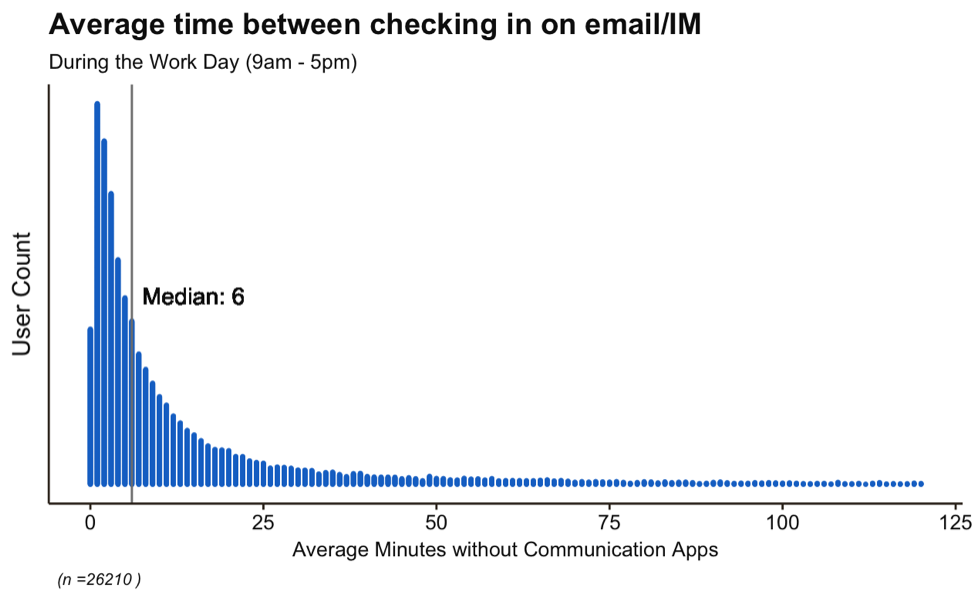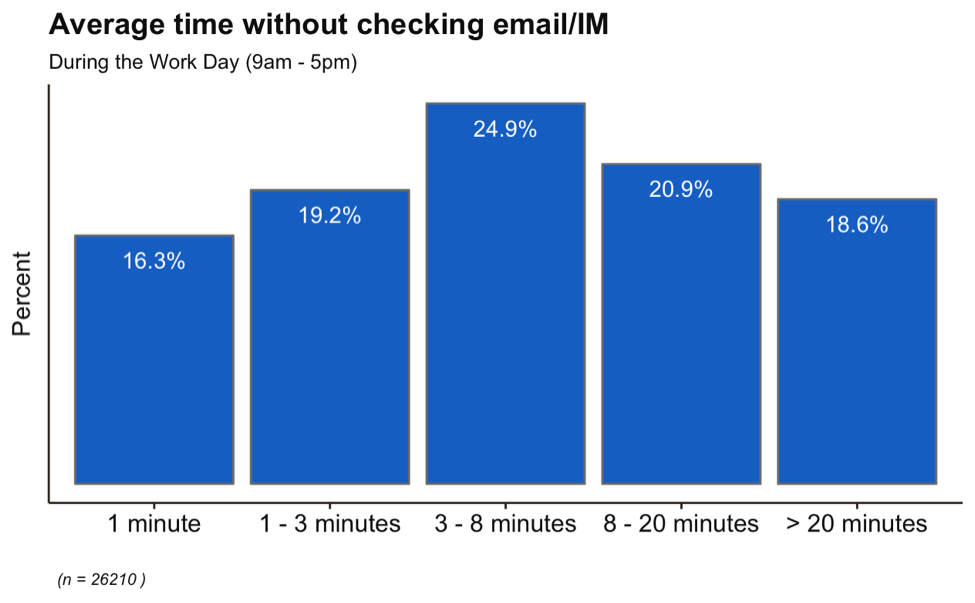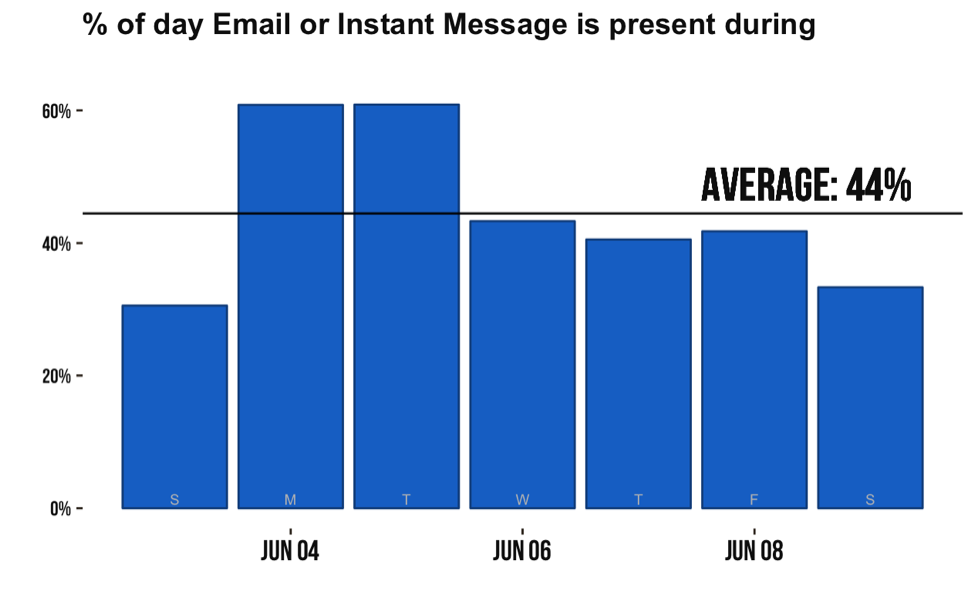If you work in an office, you probably have a love/hate relationship with email.
Yes, you need email–and it’s chatty heir-apparent Slack–to stay informed and do your job. Collaboration is important, and technology has evolved to remove nearly all friction from it. We’re always connected. Always available. Always switched on.
In fact, a recent study found that 84% of email users keep their inbox open in the background at all times with 70% of emails being opened within 6 seconds of receipt.
The problem is, we’ve gotten so good at responsiveness that the other parts of our work–and our wellbeing–are suffering from it. Much of our most important work needs deep focus and time to think. Constantly being pulled into our communication tools robs us of precious mental space, and we end up leaving work each day wondering if we accomplished anything at all.
But just how bad is it?
To find out, we looked at the anonymized worldwide data of more than 50,000 knowledge workers and found a trend of distraction and interruption in the workplace that was worse than we expected.
The average knowledge worker “checks in” on email and IM every 6 minutes
For knowledge workers—like writers, designers, developers, and project managers—the modern workplace run on collaboration and quick access to information.
However, while communication tools are great for giving us the answers we need on command, they’re also a constant source of interruption to our focused work.
When we looked at the data, we found that the average knowledge worker “checks in” with communication tools every 6 minutes.

(In this case, a “check in” is defined as any time you switch to a communication tool while working on another productive task.)
How are we expected to get focused work done when we only have a few minutes in between answering emails and messages?
The short answer is we aren’t.
In fact, while 6 minutes was the median we found, the full breakdown looked equally grim.
What we discovered was that 35% of workers check their email and IM every 3 minutes or less. While only 18% can go more than 20 minutes without being pulled into communication.

Even worse, we found that people who use Slack—a popular team chat tool meant to reduce email use—actually switched to communication tools more often. Rather than streamlining our communication time, Slack users on average spent only 5 minutes in between communication check ins, while non-Slack users could go 8 minutes.
40% of knowledge workers never get 30 minutes straight of focused time in a workday
But wait a second. Aren’t these just averages? Surely there must be periods of time where we’re checking in with communication tools a lot and others where we get the long stretches of focused time we need to do our best work?
Unfortunately, our data shows that we rarely get time for deep work.
In fact, we found that the average knowledge worker maxes out at around 40 straight minutes of focused time free from communication. In other words, 40 minutes was the longest stretch most people went without checking email in a day.

And again, this was the median. When we dug into the numbers, the data told an even bigger story.
17% of people can’t even get 15 minutes straight of uninterrupted, focused time without communication, while only 30% are able to get an hour or more.

If you feel like you’re struggling to find focused time in the workday, you’re not alone.
All these “check-ins” turn your focus into Swiss cheese
We think this data paints a pretty clear picture of how much communication overload happens in the modern workplace. But to really understand what it means, we wanted to bring it down to the individual level.
Using RescueTime data scientist Madison Lukaczyk’s own data, we found that over an entire week, she only had 8 half-hour blocks of productive work where she didn’t check in on email or IM:

To get an even more in-depth look, let’s zoom in on one of those hour blocks:

On June 5th, between 10–11am, Madison switched to a communication tool in 3 of 12 five-minute blocks. This means that while she was working, communication tools were present during 25% of that hour.
You might only spend a short amount of total time on email and IM, but these tools are ‘present’ during half your day
How you use email and communication tools will depend on the nature of your job. However, we can probably all agree that we’d like more blocks of uninterrupted time to focus and do meaningful work.
In fact, when looking at Madison’s data, we found that while she only spent 21% of her total time on email and IM, those tools were present during 44% of her day.

A high presence rate doesn’t necessarily mean that you’re being distracted by communications. But if your daily communications presence rate is much higher than your total time spent on those tools, you’re likely being distracted by them.
Where do we go from here?
The modern workplace is filled with distractions. And we’re not doing ourselves any favors by constantly checking in on our communication tools.
While we’ll never be able to get rid of email and IM from the workday (and wouldn’t want to). Being aware of just how present they are can help us make better choices about how we use them and find balance in our workday. And, a little awareness can help us feel less crazy when we can’t piece together where the last eight hours have gone!
Many productivity experts have suggested batching communications into specific blocks during the day. While others have suggested committing to an hour or more of focused work without email or IM during parts of your day when you’re less likely to be needed (like early in the morning).
Whatever works for you and your role, it’s probably safe to say that being purposeful in when and how you check in with communication tools is better for your productivity, digital wellness, and focus than letting them take over half your day.

